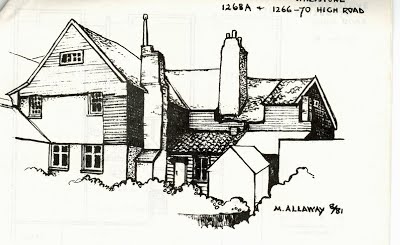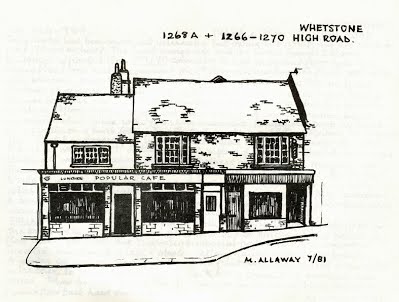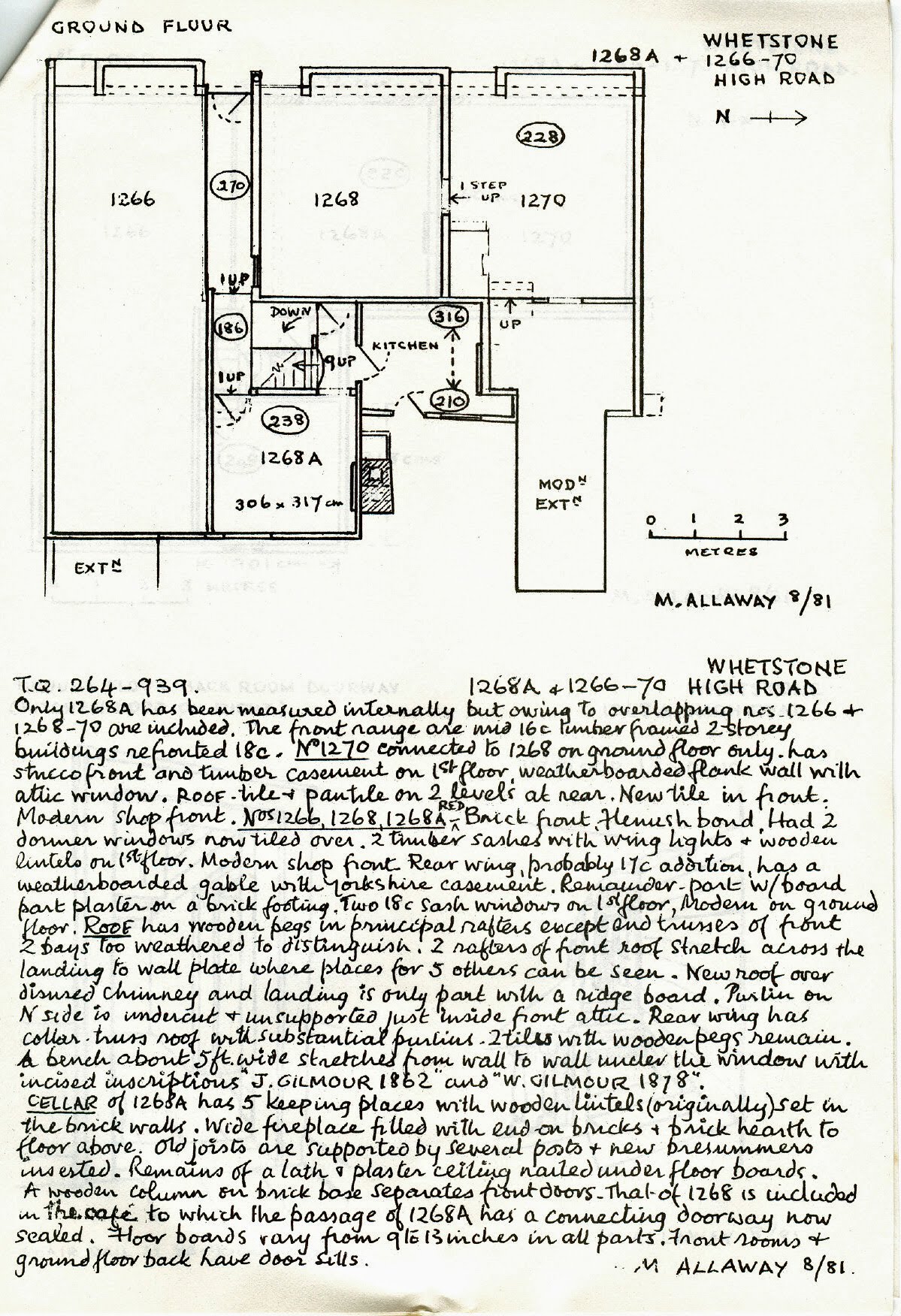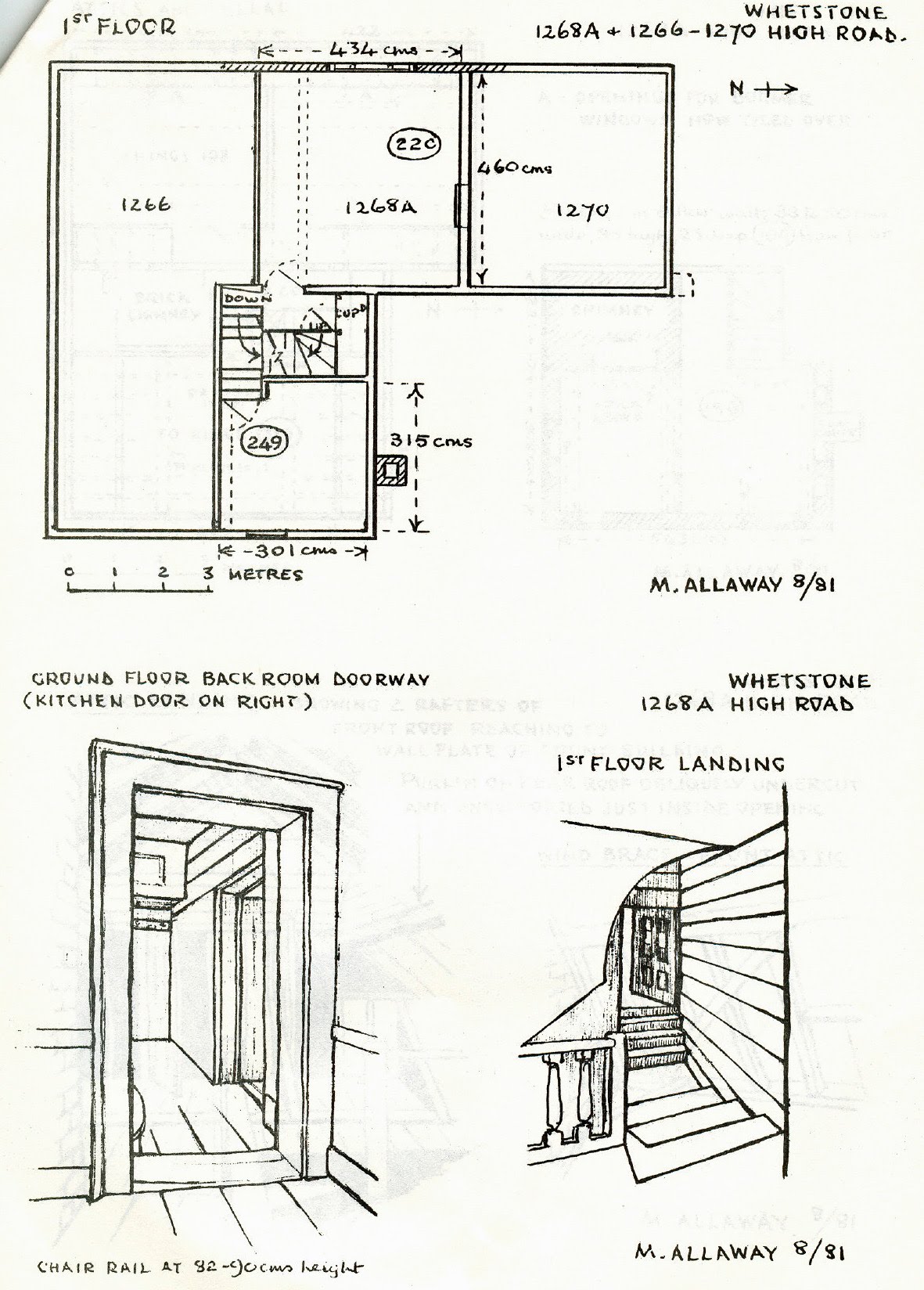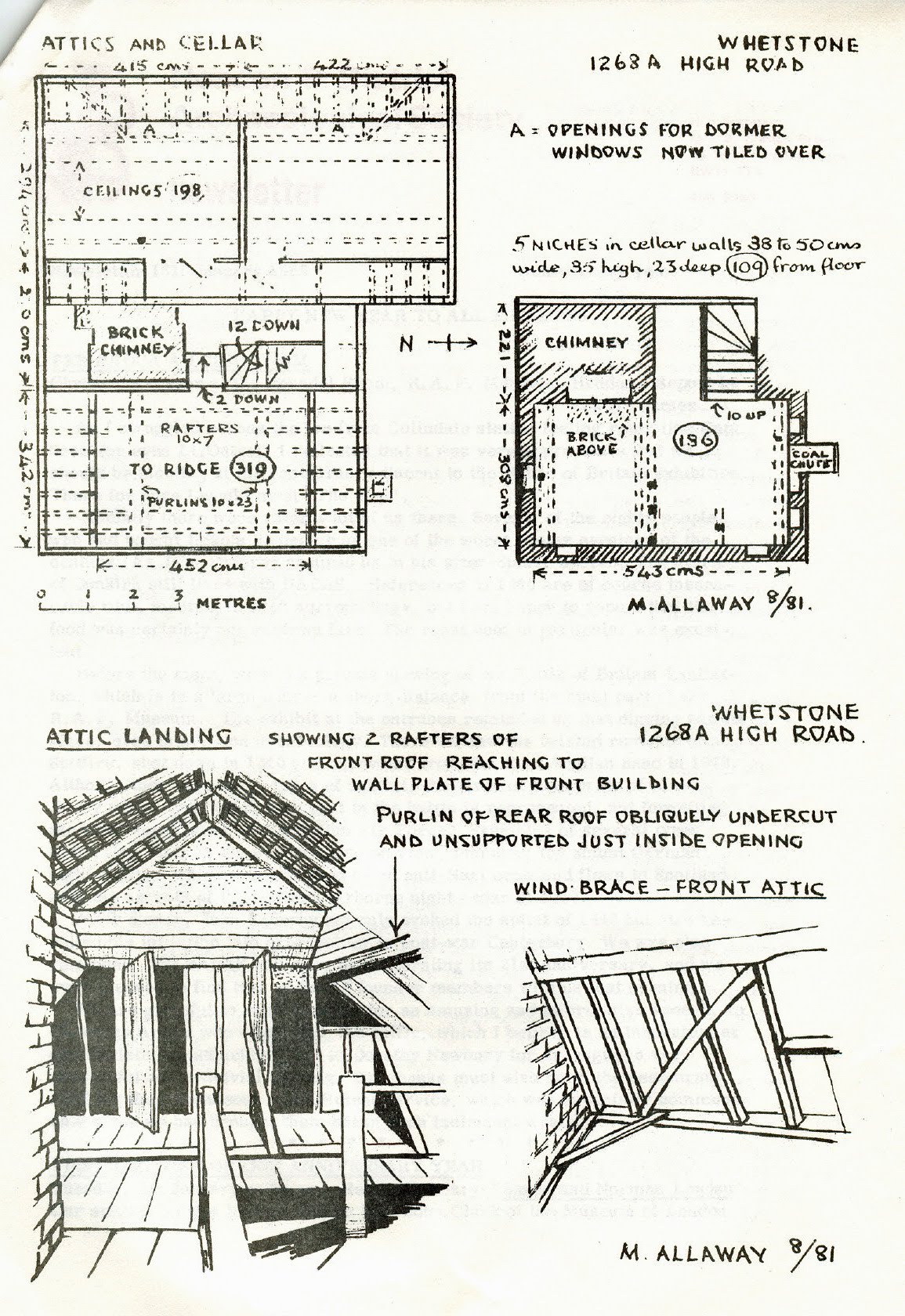Newsletter 131 January 1982 Anniversary year
NEW YEAR TO ALL MEMBERS
PER ARDUA AD CONVIVIUM
Christmas dinner at the Roundel Room R A F. Museum, Hendon Report by Edward James As I struggled across the ice from Colindale station feeling rather like Scott (or even Lt, Oates), I reflected that it was very appropriate that we should be meeting at the restaurant adjacent to the. Battle of Britain exhibition. There for sure I would meet “The Few”
Actually there were rather a lot of us there. Seventy of the eighty who had bought tickets turned up on one of the worst winter evenings of the century. As John Enderby assured us in his after dinner speech, The Spirit of Dunkirk still lives with HADAS. References to 1940 are of course inescapable when meeting in such surroundings, but am happy to report that the food was certainly not wartime fare. The roast beef in particular was excellent.
Before the meal, we had a private viewing of the Battle of Britain exhibition, which is in a large hangar a short distance from the main part of the R A F museum, The exhibit at the entrance reminded us that digging has its place, even in aviation archaeology. There we saw the twisted remains of a Spitfire, shot down in 1940 excavated from, the East Anglian sand in 1973. Although there are many of exhibit, .the aircraft take pride of place. Every major type of aircraft that took part in the battle is represented no forgetting the brief appearance of the Italian Air Force, Examples of several types which flew later in the war are also on view including the actual German night fighter which was hijacked by an anti-Nazi crew and flown to Scotland with the secrets of with the secrets of the German airborne night radar in 1943. .
After dinner, John Enderby not only evoked the spirit of 1940 but also recalled his initiation into archaeology in post-war Canterbury. We were also reminded that HADAS will soon be celebrating its 21st. anniversary and we were pleased to find two of the 18 founder members with us that evening.
We are grateful to John Enderby for an amusing and informative speech, to Christine Arnott who organised the raffle, which I believe is an innovation at our Christmas gatherings and to Dorothy Newbury for arranging a very successful and convivial evening. Our thanks must also go to the restaurant staff for their courteous and efficient service, which was especially commendable since we had brought them out in such inclement weather
FIRST LECTURE OF OUR ANNIVERSARY YEAR
Tuesday, 5th January at 8pm. Hendon Library “Saxon and Norman London” Our speaker at this lecture will be Mr. John Clark of the Museum of London
He has written an informative pamphlet on the subject, which was reviewed in a previous Newsletter. Mr. Clark will be known to many members as the Secretary of the London and Middlesex Archaeological Society.
SITE WATCHING A note from Liz Sagues
First, an explanation; second, an expression of thanks and third, an exhortation.
If those HADAS members who in the past volunteered to watch development sites for signs of archaeological material uncovered during building operations have found there have been no requests for their help over recent months, it’s not because they’ve been forgotten. The Research Committee has, with much heart-searching, been reconsidering the organisation of site watching in an effort to reduce the vast amount of time, for very little return, put in by the volunteer watchers.
The result has been a decision to abandon the previous system under which a large proportion of all development sites in the borough were watched, in favour of concentration on specific sites thought to be of particular importance. So all planning applications are now being studied with this in mind, and the members concerned – Helen Gordon for the Hendon area, Sheila Woodward for Edgware, Paddy Musgrove for Finchley, Bill Firth for Golders Green and Childs Hill, Ann Trewick for Barnet – will be calling on other site watching volunteers only when something major comes up. In this way, the Research Committee hopes to reduce the frustration the previous system inevitably produced.The members of HADAS involved the site watching in the past are too numerous to mention here by name But the Research Committee would like to pass on to them its heartfelt thanks for all their efforts, in what was all too often an unrewarding task.
But, the fact that the new system exists is not an excuse for members to cross to the other side of the street each time they see a building site. There
is still a need for observation for the most spectacular or interesting of finds can be made in the most unexpected places so please every time you pass a building site, look to see if there’s anything that just might be archaeologically interesting. Don’t be deterred by inexperience – a more expert member will be happy to give a second opinion. And if the site is close to your home, or regular route to work or the shops, the establishment of a friendly acquaintanceship with the foreman could reap rich archaeological rewards or even produce a new HADAS member. If you need help or advice, the site watching “supervisors” can be reached as follows
Helen Gordon, 13Sunningfields Road, NW4 (203 1001) Sheila Woodward, 8 Hereford House, Stratton Close, Edgware Paddy Musgrove, 20 Redbourne Avenue, N3,(346 0128); Bill Firth, 49 Woodstock Avenue, NW11 (455 7164); Ann Trewick, 88 Western Way, Barnet (449 4827).
ROMAN RESEARCH GROUP
The next meeting of this group will be at 8n m on Wednesday, 20th Jan
at 94 Hillside Gardens, Edgware (Tessa Smith).
The next walk – researching Roman roads – will take place on Sunday, 31St
January, Exploreres should meet at 10am underneath the viaduct in Waterfall Road, Southgate, N.11 For further details, or a lift, please telephone Helen Gordon, 203 1004.
HADAS MEMBER LAID LOW
For one HADAS member November 1981 proved an unlucky month
MURIEL JONES was walking down Brent Street one evening, starting her journey home to North Finchley, when a van turned sharply out of Shirehall Lane. The next thing she remembers is waking up in Ward Cl at Edgware General Hospital’ – with several broken bones, not to mention cuts and bruises
Miss Jones’s many friends in the Society missed her cheery presence at the Christmas party – she is normally an enthusiastic supporter of meetings, lectures and outings A 2-month stay in hospital was forecast by the doctors after her accident: but she is such a determined lady that we would not be a bit surprised to hear she had proved them wrong
All her HADAS friends will, we feel sure, want to join the Newsletter in
wishing Miss Jones a speedy recovery and sending her our warmest sympathy.
WORKING FOR de HAVILLAND IN THE 1930s By Bill, Firth
Following an appeal around Burnt Oak by Albert Dean for reminiscences of the aircraft industry in the area, a reply was received from Mr John Marini who was about to return to Canada. In the short time available Bill Firth was able to interview him and take notes from which the following account is written.
In 1927, when Mr. Marini was 11, the family moved into 2 Slipstream Road which was the first part of the Watling Estate to be completed his sister still lives in the house, which is where the interview took place, and not only must she be one of the longest-standing residents on the estate but the house must be one of few which have been in the constant occupation of one family;
Before the completion of the estate Mr Marini remembers, being able to look across the fields to Hendon Aerodrome, the nearest part of which is only about ½ mile away. In 1927 there were no shops in Watling Avenue. L. W. Brady sold newspapers outside the station and later opened the first shop nor was there anything on the Edgware Road, now Burnt Oak Broadway, except the Stag pub. There were a few cottages on the right hand side going up Stag Lane but otherwise the surrounding area was all farm land.
When he was 15 (in 1931)` Mr’ ‘Marini started working at the de Havilland works on a “time equivalent” basis – there was no apprenticeship scheme in the aircraft industry at that time but after one had completed one’s “time equivalent” at the age of 21, one was regarded as a skilled worker and would be paid accordingly: Work started at 7.30am and when the factory workers were walking up Stag Lane to clock on, a cowman was driving cows up the lane for milking. There was a gate across the factory entrance which was closed at 7.30 and not opened again until 7.40 when one could clock on for 7.45, so that anyone who was late at 7:30 lost 15 minutes. The original factory was in old-fashioned hangers and wooden huts of which
one, which was the original office, is now a museum at Hatfield. The extant brick buildings are the World War II factory: There were about 300 employees and the firm was making a variety of Moths: Mr. Marini recalled the Gypsy Moth with two open cockpits, the Fuss Moth with a cabin and the Fox’ Moth which had an open pilot’s cockpit behind a four-seater passenger cabin. A Moth sold for £850- £1000. The company had made its own engines since about 1923. The engine shop was on the right of the gate, beyond it were the aircraft shops and design offices.
In addition to de Havilland, The London Flying Club and Air Taxis Ltd. used the aerodrome. AmyJohnson was a member of the club and, although she was an excellent navigator, she was not such a good pilot and she continued to take lessons at Stag Lane. Mr. Marini used to go to the aerodrome at the weekends to help her clean her aeroplane.
The aerodrome had a bad slope on it which Mr. Marini feels may have been
the cause of accidents. However, in 1934 it was sold and flying transferred to Hatfield, ‘although the engine division remained at Stag Land. A new propeller manufacturing division was started in the vacated aircraft factories. Mr. Marini bought a motor cycle in order to travel to Hatfield but, since the company would not increase his pay from 8d per hour (3½p) to 9d per hour (4p), he stayed a few months in the engine division and then left to work for Handley Page at Cricklewood. Mr. Marini added that, although Handley Page had lots of work in hand on the Heyford bomber, very few de Havilland workers changed employers. The majority in aircraft division at Stag Lane went to Hatfield. However, de
Havilland had trouble at Hatfield to find enough labour – it was at that time a very rural areal and after a few months at Handley Fage, ways were found for Mr. Marini to be re-employed by de Havilland at Hatfield at 9d per hour. In
1935 with the new activities at Stag Lane, more people than ever were employed there and then the company restarted part of the aircraft division there to make aeroplane parts, not only for their own Moths but also wing centre sections for Gloster Gladiators. After some more shuffling between de Havilland and the Power Equipment Company, Mr. Marini came back to Stag Lane to work on the Gladiators but ‘in 1337 when he was 21, he went away to Yeovil to work for Westland as a fully qualified adult worker – but not for long because during World War he was back at Hatfield.
Mr. Marini recalls Geoffrey de Havilland as a “character”, He made a point of talking. to everyone on the plant at least once a week and Mr. Marini remembers struggling one day to make some bolts fit when de Havilland came and told him to.get a 2-pound hammer on the job. This was obviously a tongue in cheek remark because Mr, Marini hastened to add that de Havilland were
very quality concious, more so he reckons than other aircraft firms at that
time.
Geoffret de Havilland and his board were very good to their workers and the company was a rare one in being among very few which paid their workers for the Christmas Day holiday. The management however was anti-labour and eventually got kicked out because of their attitude.
In the late 1930s skilled tradesmen at Stag Lane (e.g. fitters, machinists, woodworkers) got 1/4½d per hour (7p) for a 5½ day, 48 hour week. There was no sick pay and no paid holidays. Skilled workers at Ford, Dagenham got 1/10 per hour (9p). In 1938 although the aircraft industry was very bust on rearmament, projects wages did not go up. There was a national wage claim by the Confederation of Trade Unions for £1 per week increase but the unions had little power at that time and actually settled for ¾d per hour – only 3/- (15p) for a 48 hour week – and even this was paid in ¼d monthly instalments over 3 months de Havilland was not unionised until the move to Hatfield.
At Hatfield a special shop for the DH 94 Moth Minor was built somewhat distant from the rest of the plant and at the start of World War II this become part of the sheet metal department. Quite early in 1940 this was “accidently” bombed. A Junkers JU88, which was lost, broke cloud over the aerodrome which was recognised by one of the crew who had worked there as a student. “Don’t bomb it”. he said, but, with fuel low, the bombs had to go. From a low altitude they skidded on the grass and hit the DH194 building. The aircraft was shot down by an old naval gunner and the crew captured which is how this story became known. As a result, de Havilland dispersed their activities into many factories in the surrounding area – six in Welwyn Garden City, including Buchanan’s toffee factory, one in Luton; and four or five in St. Albans, including the Salvation Army brass instrument factory from which the S. A. workers were instantly hired into the aircraft industry. Mr. Marini took charge of quality control in the Welwyn and Luton factories.
One other aspect of the 1940 raid was that after it Hatfield was very well camouflaged while a poorly camouflaged dummy factory was set up nearby at Panshanger. This was later bombed while Hatfield escaped.
After the war, Mr Marini worked on the Comet for a time but went to Canada in 1951.
GREATER LONDON RECORD OFFICE
The Record Office issued a statement in mid-November about the impending move, in the autumn next year, to 40 Northampton Road, Clerkenwell, E. C.1
A start will be made early in 1982 on moving records . “While collections are being prepared, packed and moved they will not be available for consultation,” says the statement. “Afterwards they will be treated as out-re.pository material, and can be brought to County Hall for consultation, but five clear working days’ notice will be necessary, As soon as possible we will issue a detailed timetable indicating when particular groups will be moved and when the Search Room and History Library will close for transfer to Clerkenwell.
The new premises, we are told, will provide improved accommodation for readers as well as for storage. There will be a readers’ common room and an exhibition room for talks and displays. Meantime, there will inevitably be some disruption in service, and an appointment, or a preliminary phone call, may save waste of time.
The Greater London Record Office is open from Monday to Friday, 10a. m. – 4.45p.m and on Tuesdays, till 7.30p.m. (by appointment only). For records stored in an out-repository, an appointment 3 working days in advance must be made – and no list has been published indicating to which records this applies. For enquiries and appointments telephone 633 6851.
It is interesting to compare the normal arrangements at the Greater London Record Office (that is, open 6¾ hours on 4days a week, 9½ hours the fifth, and closed on Saturday) with the sort of service offered in another city.
In the last issue of “Local Population studies” (which fights many a battle for the users of public records) there is a letter from a research worker in Liverpool, which is worth quoting in Full. It is headed “A. Testimonial from a Satisfied Customer”
“I read with interest the latest editorial regarding record offices, but think that Liverpool Record-Office merits special mention, as an example of the type of service that a record office should provide to all researchers.
Although it is a city record office its collection of archive material rivals many of the county record offices. It is open 12 hours a day Monday to Friday
and nine hours on Saturday, and 69 hours of free access with ample seating and no booking is praise-worthy, indeed when we see the difficulties faced in some areas”
HADAS MEMBERS’ LIST
The new membership list – corrected up to Jan. 1st 1982 will be typed and duplicated during January, for issue from Feb.1st. We would like to take this chance of warmly thanking Phyllis Fletcher for so quickly and kindly offering to do the long and tedious job of typing and checking it.
Copies of the new list will go automatically to Committee members, but it will not be circulated as a matter of course to all members: several people have indicated that they really do not need it. If you are not a Committee member and you would like to have an up-to-date membership list, please let our Hon. Secretary know before January 15th. A list (no charge for it) can then be included with your February Newsletter
ANCIENT BUILDINGS IN WHETSTONE
We end this month’s Newsletter with a piece of recording by HADAS member MARY ALLAWAY.
Any motorist who has driven a car up Totteridge Lane to its T-junction with High Road, Whetstone, and has been caught at the traffic lights will know the row of shops opposite the lights immediately and north of the Griffin pub (itself on the
site of an older inn (it was rebuilt c1920). when you look up at the roofs of the buildings- nos. 1264-68 High Road- are ancient; and a trip round the back shows a medley of varying roof-styles and weatherboarding which seems positively medieval.
Early this summer Mary Allaway undertook for the Documentary
Group, a survey of these buildings and a study of their documentary
history. The first resuIts of her work, on two of the houses, is
seen in the following pages. The figures in ovals on the various
plans indicate the ceiling height of the room or passage concerned.
Mrs. Allaway emphasises that this is only the first stage of her report, It has not been easy, so far, to gain access to some parts of the various building; but she hopes, in time, to be able to record all of them. She also hopes to be able to turn up some more documentary evidence: the next step there is a determined assault on the hearth tax returns
